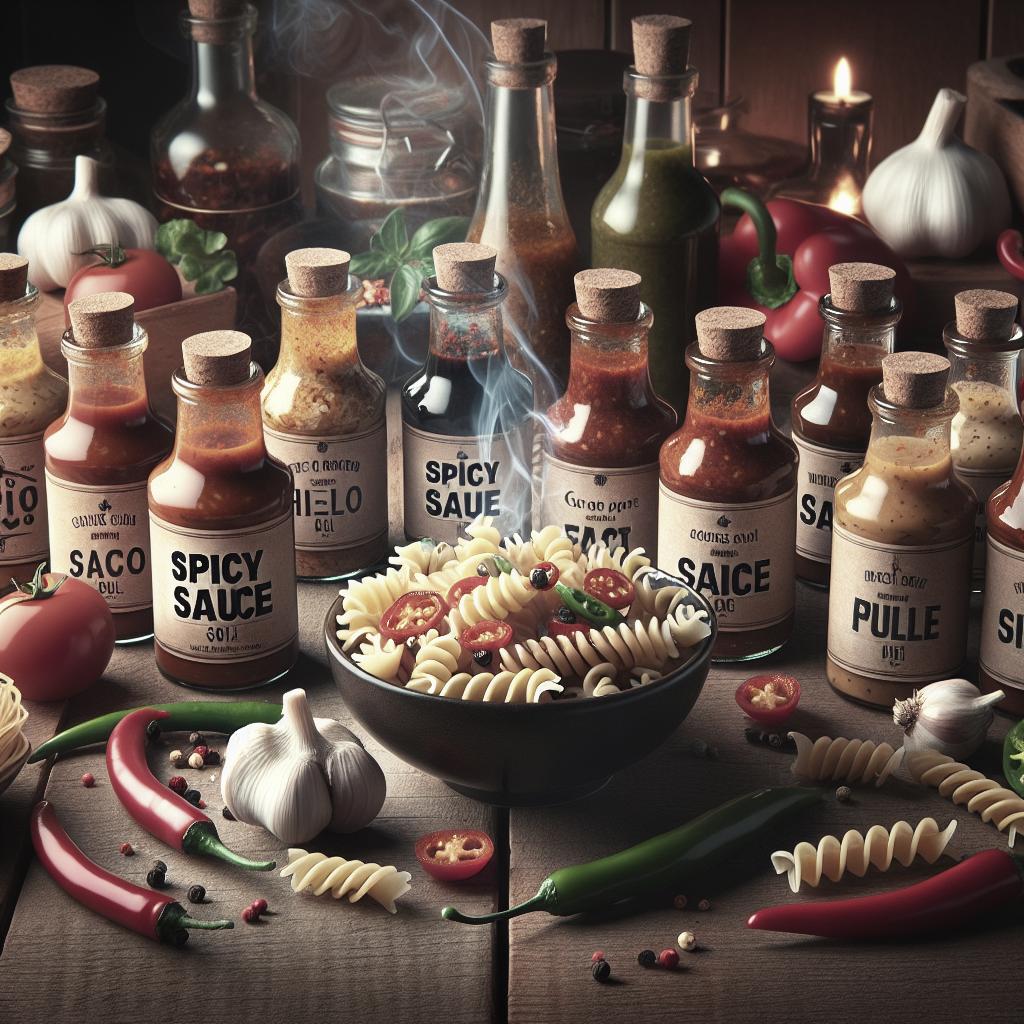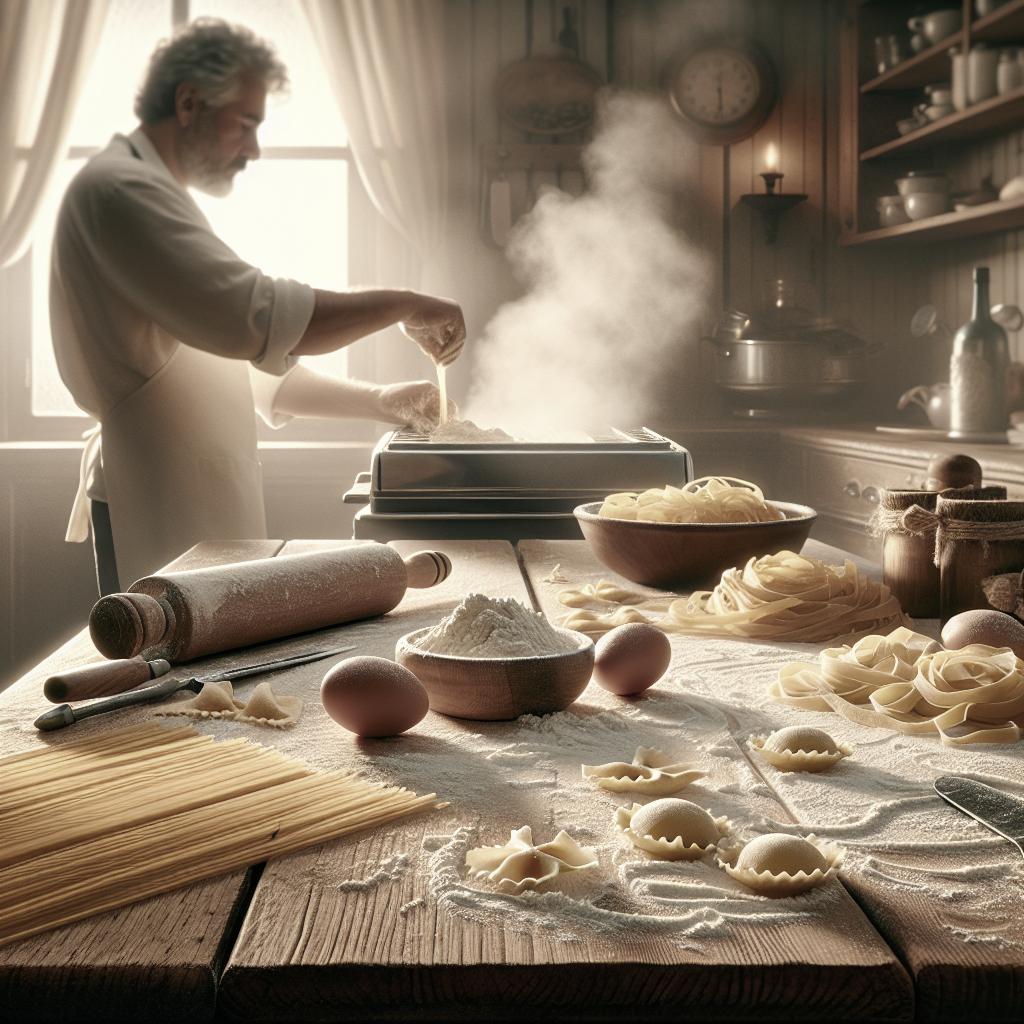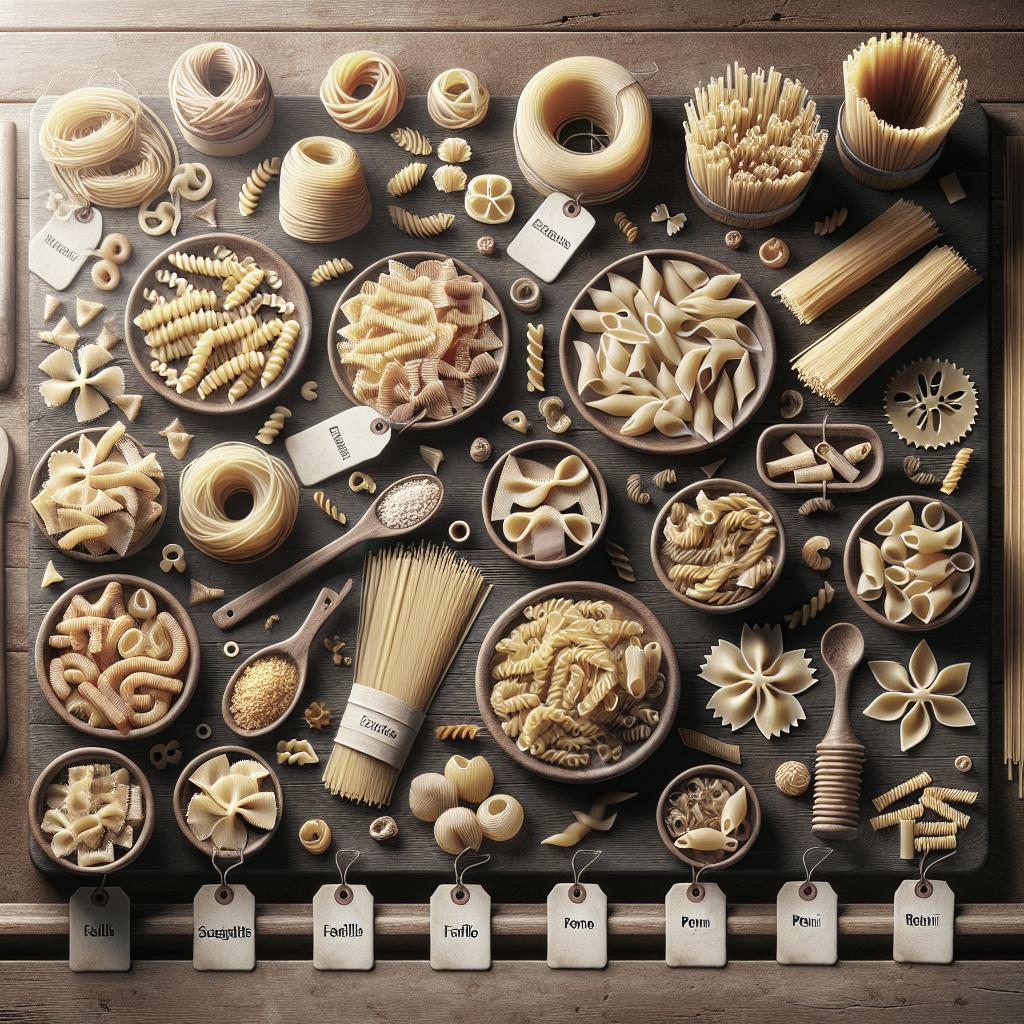“`html
Exploring Spicy Sauces for Pasta
Pasta is a versatile dish adored worldwide, and adding a spicy sauce can elevate it to new heights. This blog post dives into the tantalizing world of spicy pasta sauces, with a special spotlight on the beloved Pasta Arrabbiata. Learn how to craft this traditional Italian sauce at home with easy-to-follow instructions and discover expert tips to perfect your dish. We’ll also explore ideal pasta shapes and complementary toppings, creating a feast that’s as exciting to make as it is to eat. Get ready to spice up your culinary repertoire with fiery flavors and delectable pasta sensations.
Easy Pasta Arrabbiata Sauce (spicy tomato)
Pasta Arrabbiata is a classic Italian dish known for its bold, spicy tomato sauce. The word “arrabbiata” translates to “angry” in Italian, indicating the fiery kick that the dish provides. It’s made using simple and fresh ingredients such as tomatoes, garlic, and red chili peppers, resulting in a sauce that is both spicy and incredibly flavorful.
This sauce is perfect for those who love a little heat in their meals. It pairs beautifully with a wide variety of pasta shapes and can be a delightful addition to any dining table. Whether you prefer a mild spice or a fiery blast, Arrabbiata sauce can be tailored to meet your heat preferences and will always satisfy your craving for something hot and delicious.
Recipe
Ingredients
To make a traditional Pasta Arrabbiata sauce, you’ll need a few key ingredients: ripe tomatoes, garlic cloves, red chili peppers, olive oil, salt, and fresh parsley. The quality of these ingredients will significantly impact the final flavor, so it’s worth investing in fresh, high-quality produce.
Additionally, if you want to add a personal twist to your sauce, consider incorporating ingredients like freshly grated Parmesan cheese, black pepper, or even a splash of balsamic vinegar for extra depth. Experimentation is encouraged to make the sauce your own.
Instructions
Begin by heating olive oil in a pan over medium heat. Add minced garlic and red chili peppers, sautéing until the garlic is golden and fragrant. Next, add the chopped tomatoes and a pinch of salt, allowing the mixture to simmer until the sauce thickens.
Taste the sauce and adjust the seasoning as needed. Once the desired consistency and flavor are achieved, toss the sauce with cooked pasta of your choice. Garnish with fresh parsley and serve it hot to savor the spice-laden flavors.
Video
For visual learners, watching a video demonstration can be incredibly helpful. A well-crafted video can guide you through the step-by-step process, ensuring that your Arrabbiata sauce turns out just right. Look for tutorials online, many of which are offered by seasoned chefs who share invaluable tips and tricks.
Notes
Keep in mind that the level of spiciness can be adjusted based on your personal preference. If you prefer a milder sauce, reduce the amount of chili peppers or remove the seeds before chopping them.
Additionally, balance out the heat by stirring in a spoonful of sugar if the sauce tastes too acidic. Over time, you’ll fine-tune the recipe to perfectly match your taste buds.
Ingredients
While you only need a few staple ingredients for an Arrabbiata sauce, it’s important to prioritize freshness and quality. Opt for high-quality tomatoes, fresh cloves of garlic, and vibrant red chili peppers to ensure your sauce is packed with flavor.
Extra virgin olive oil serves as the base for sautéing, infusing the sauce with a rich depth. Lastly, remember to season generously with sea salt and garnish with chopped fresh parsley for a colorful finishing touch.
How to make this recipe
The process is straightforward and beginner-friendly, making it perfect for culinary enthusiasts of all levels. The key is to start with gentle heat to prevent the garlic from burning while ensuring that its natural oils infuse the olive oil with aromatic flavors.
Once the garlic and chili peppers have softened, incorporating the tomatoes allows them to break down and release their natural juices. This combination creates a luscious and inviting sauce, ready to grace your pasta of choice.
How much salt to put in pasta water
The age-old debate continues: how much salt is enough when cooking pasta? A general rule of thumb is to add approximately one tablespoon of salt per four to five quarts of water. This ensures the pasta absorbs just the right amount of seasoning as it cooks.
Remember to taste your pasta water—it should resemble the saltiness of the sea. Properly seasoned water not only enhances the pasta’s taste but also carries the seasoning through to the final dish.
What pasta shape is best for arrabbiata?
Choosing the right pasta shape is crucial to fully appreciate the robust flavors of Arrabbiata sauce. Traditionally, the dish is prepared with penne, which has ridges and a tubular shape perfect for capturing the piquant sauce.
Other shapes like rigatoni or fusilli work wonderfully as well, as their spirals and grooves create crevices for the sauce to adhere to. Ultimately, the choice is yours, with each type offering a unique texture and dining experience.
Must have toppings
While the simplicity of Arrabbiata sauce is part of its charm, adding toppings can enhance your pasta dish significantly. Consider a sprinkle of freshly grated Parmesan cheese to add a nutty, savory flavor.
A generous handful of fresh basil or arugula can elevate your dish with an aromatic freshness. For extra spice, a dash of red pepper flakes complements the sauce beautifully, aligning with the fiery theme.
Other recipe FAQs
If you’re new to making spicy sauces, you might have questions about ingredient swaps or adjustments. For instance, if fresh tomatoes aren’t available, use canned tomatoes for a similar result. Just ensure they’re of good quality.
If you’re not a fan of red chili peppers, substitute with crushed black pepper or a dash of cayenne. Let your palate guide you—cooking should be an enjoyable and creative process.
Want some other pasta dishes to try?
If your love for pasta knows no bounds, consider exploring other classic Italian dishes. Spaghetti Aglio e Olio offers a simpler yet equally flavorful option with garlic and olive oil.
For something heartier, indulgent Carbonara, rich with eggs and pancetta, might just be your next adventure. Each recipe has its unique charm, allowing you to curate a diverse pasta repertoire.
Made this recipe and loved it?
Would you like to save this?
If you’ve tried this recipe and it became an instant favorite, save it for future reference. Keeping a collection of loved recipes helps you recreate joyful culinary experiences time and again.
Share your experience with friends and family or on social media platforms. Food brings people together, and nothing beats sharing a delicious plate of pasta and hearing others’ take on the same dish.
Expert tips!
Mastering Pasta Arrabbiata starts with a few expert tips: always start with high-quality, fresh ingredients, and don’t rush the cooking process. Allowing flavors to meld naturally will yield a more nuanced, flavorful sauce.
Moreover, seasoning incrementally, based on taste at different stages, ensures that you find the perfect balance. Tailoring the recipe over time will help you discover the precise version that sings to your taste buds.
More Tomato Pasta Sauces
Would you like to save this?
Beyond Arrabbiata, the world of tomato-based pasta sauces offers numerous delights. Discover the classic Marinara, the hearty Bolognese, or the luxurious Pomodoro. Each sauce brings its distinct character to the table.
Saving your favorite recipes and rotating through different sauces will bring variety and excitement to your mealtime routine. With so many choices, there’s always something new to explore in the kitchen.
Lessons Learned
| Topic | Key Points |
|---|---|
| Easy Pasta Arrabbiata Sauce | Classic Italian spicy tomato sauce; simple ingredients. |
| Recipe | Use fresh tomatoes, garlic, chili; simmer to thicken. |
| Salt in Pasta Water | Add a tablespoon of salt per 4-5 quarts of water. |
| Best Pasta Shape | Penne, rigatoni, fusilli work well with Arrabbiata. |
| Must Have Toppings | Consider Parmesan, fresh basil, red pepper flakes. |
| Expert Tips | Use quality ingredients; season incrementally; experiment with spice levels. |
“`


